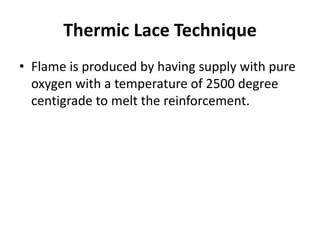This document discusses techniques for repairing, rehabilitating, and retrofitting structures. It covers strengthening structural elements, repairing structures damaged by corrosion, fire, leakage, or earthquakes. Specific techniques addressed include repairing fire-damaged concrete, sealing leaks, repairing cracks, jacketing structural members, and dry packing. The document also covers engineered demolition methods like mechanical demolition, implosion, and deconstruction for taking down structures.












































